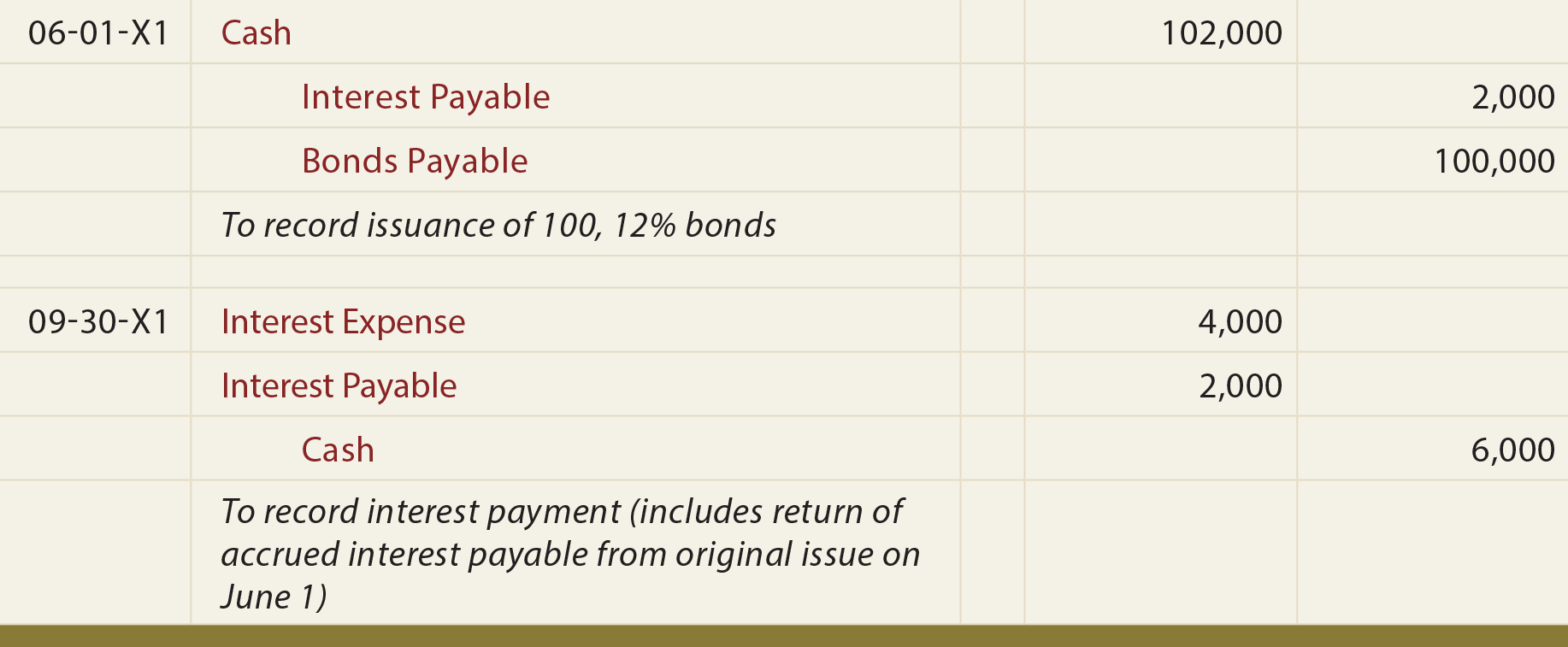
Interest payable is recorded when the company owes interest for a period of time but has not yet made the cash payment for the interest. This article focuses on cash versus the accrual basis for interest, which includes interest paid in cash, interest expense under US GAAP, and interest payable. examples of itemized deductions The main reason that there is a difference between cash and accrual for interest is that interest expense is accrued based on the terms of the loan. That means that if a company pays interests at the end of 12 months, then they must evenly accrued for that interest expense over 12 months.
How To Record?
This journal entry is made to record the cash outflow for the interest payment together with the removal (debit) of the interest payable that the company has recorded in the prior period. Interest payable accounts are commonly seen in bond instruments because a company’s fiscal year end may not coincide with the payment dates. For example, XYZ Company issued 12% bonds on January 1, 2017 for $860,652 with a maturity value of $800,000. Note that loan interest is typically accrued over time and recorded as an expense. The specific method will depend on the loan terms and the company’s accounting policies. Cash basis accounting is easier to implement and understand for small businesses with limited transactions and for personal finances.
Debits and Credits
This transfers the balances of temporary accounts (revenue, expense, and dividend accounts) to the retained earnings account. Interest expense, as previously mentioned, is the money a business owes after taking out a loan. Any time you borrow money, whether from an individual, another business, or a bank, you’ll have to repay it with interest. The interest part of your debt is recognized as an interest expense in your business’ income statement. If the company doesn’t record the above journal entry in the April 30 adjusting entry, both expenses and liabilities will be understated by $250. Your journal entry should increase your Interest Expense account through a debit of $27.40 and increase your Accrued Interest Payable account through a credit of $27.40.
Can journal entries be corrected once recorded, and how?
Businesses with high transaction volumes or those that need daily oversight of their finances should record entries daily. Weekly is good for moderate transaction volumes, and monthly works for most businesses with low transaction volumes. To help you work out different scenarios in your business, we’ve compiled a journal entry example for each common transaction. We also go over the components of journal entries and why they are important.

Revenue and Expense Accounts
- When you accrue interest as a lender or borrower, you create a journal entry to reflect the interest amount that accrued during an accounting period.
- Now, when you pay your interest, the interest expense account doesn’t change.
- This method follows the matching principle of accounting, which states that revenues and expenses are recorded when they happen, instead of when payment is received or made.
- At the end of a quarter, the company would pass the same entry, and the balance in the interest payable account would be $60,000 (until the interest expenses are paid).
- In the calculation of interest payable, it is important to know the time for which the principal amount has been borrowed.
When businesses keep track of the interest expenses, it ensures they pay them on time. In case, the accrued interest payment figure over a period indicates a high increase, it would mean delayed paying offs. Thus, when these payments are monitored, the firms make sure there is no delayed payment and the amount owed to lenders are paid to avoid any huge increase in the accumulated interest payment figures. Interest payable, as the name suggests, accounts for the accumulated interest amount that a firm is yet to pay. It is a current liability for any organization, which is committed to pay back the amount owed to lenders.
Deskera allows you to automate your recurring invoice payments with just a few clicks. With Deskera’s Buy dashboard, you can make orders and send payments within seconds, and easily organize and review bills and invoices on the go. Now, when you pay your interest, the interest expense account doesn’t change.
The balance in the liability account Accounts Payable at the end of the year will carry forward to the next accounting year. The balance in Repairs & Maintenance Expense at the end of the accounting year will be closed and the next accounting year will begin with $0. The next step is to convert the rate of interest from percentage to decimal. Thus, once the firms are aware of the rate of interest at which the loans are available, they can calculate the value, converting the interest rate into a decimal form. The interest payable account is maintained under the generally accepted accounting principles (GAAP).
The recording of an unpaid interest amount on the credit side of the journal entry indicates the existence of an obligation to pay. This journal entry is an important tool for businesses to keep track of their interest expenses. The entry is made at the end of the month and includes both the debit and credit side of the ledger. In this case, the company creates an adjusting entry by debiting interest expense and crediting interest payable. The size of the entry equals the accrued interest from the date of the loan until Dec. 31.
Cash accounting recognizes revenue and expenses when cash is actually received or paid. A journal entry is a chronological record of your business’s financial transactions. While interest expense is an expense account in the income statement, that represents the total amount of the interest from borrowing cash.
The debit side is used to record the interest expense, while the credit side is used to record the interest payable. Accounting is a precise science and needs to be done correctly to ensure books balance and accounting principles are met for legal purposes. If you don’t have extensive accounting experience, particularly when it comes to debt obligations, seek out professional help to ensure your numbers are correct.
On the interest payment date of May 15, 2020, the company ABC will pay the interest of $500 (50,000 x 1%) as in agreement. Dividing the interest rate in the decimal form by the time period helps obtain the periodic interest rate. Accrued interest accumulates with the passage of time, and it is immaterial to a company’s operational productivity during a given period.

